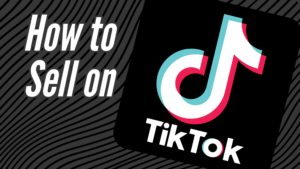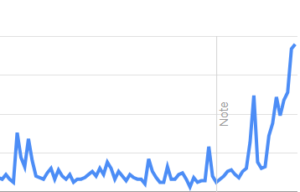Vertical Video Placements in Digital Marketing
nadams September 24, 2024
The Rise of Vertical Video in Digital Marketing
In the ever-evolving landscape of digital marketing, the way consumers engage with content is undergoing a significant transformation. With the proliferation of smartphones and mobile devices, vertical video has emerged as a powerful tool for marketers seeking to capture attention and drive engagement. Unlike traditional horizontal video formats, vertical videos align seamlessly with the natural orientation of mobile screens, creating an immersive viewing experience that resonates with today’s on-the-go audience.As social media platforms increasingly prioritize vertical content—evident in the success of TikTok, Instagram Stories, and Snapchat—marketers must adapt their strategies to leverage this format effectively. The importance of vertical video placements extends beyond mere aesthetics; they enhance user experience, boost engagement rates, and can significantly improve conversion metrics.This outline explores the critical role of vertical video in digital marketing, highlighting its benefits, best practices, and future trends. By understanding the impact of vertical video placements, marketers can craft compelling narratives that not only capture attention but also drive meaningful interactions with their target audiences.
Mobile-First Consumption
- Increasing smartphone usage for content consumption
- Natural vertical orientation of mobile devices
Social Media Platform Adoption
- Popularity on platforms like TikTok, Instagram Stories, and Snapchat
- Optimization of vertical format for these platforms
Benefits of Vertical Video Placements
Enhanced User Experience
- Full-screen immersion on mobile devices
- No need to rotate screens
Increased Engagement
- Higher view-through rates compared to horizontal videos
- Better retention of viewer attention
Improved Conversion Rates
- Seamless integration with mobile shopping experiences
- Higher click-through rates on calls-to-action
Vertical Video Best Practices
Design Considerations
- Framing for vertical aspect ratio (typically 9:16)
- Focus on visual storytelling within limited space
Platform-Specific Optimization
- Tailoring content for different social media platforms
- Leveraging platform-specific features (e.g., Instagram Stories stickers)
Vertical Video in Various Marketing Strategies
Brand Awareness Campaigns
- Capturing attention in crowded social media feeds
- Showcasing products or services in an immersive format
Performance Marketing
- Driving conversions through mobile-optimized ad experiences
- A/B testing vertical vs. horizontal formats for ROI comparison
Influencer Collaborations
- Leveraging influencers’ expertise in creating engaging vertical content
- Authentic brand integration in native vertical video formats
Challenges and Considerations
Content Repurposing
- Adapting existing horizontal content for vertical format
- Balancing production costs for multiple video formats
Cross-Platform Compatibility
- Ensuring vertical videos work across different devices and platforms
- Addressing potential display issues on desktop environments
Future Trends in Vertical Video Marketing
Augmented Reality (AR) Integration
- Incorporating AR features into vertical video ads
- Enhancing interactivity and engagement
Vertical Video in E-commerce
- Shoppable vertical video content
- Seamless integration with mobile purchasing experiences
Advancements in Vertical Video Analytics
- Improved metrics for measuring vertical video performance
- Data-driven optimization of vertical video campaigns
Conclusion
The Growing Importance of Vertical Video
- Adapting to changing consumer behaviors
- Staying competitive in the evolving digital marketing landscape
Vertical Video: Revolutionizing Digital Marketing StrategiesIn today’s mobile-first world, vertical video has emerged as a powerful tool for marketers to capture audience attention and drive engagement. This format, which aligns with the natural way users hold their smartphones, has become increasingly prevalent across social media platforms and digital advertising campaigns.
The Rise of Vertical Video in Marketing
Vertical video has gained significant traction in recent years, largely due to the widespread adoption of mobile devices and the popularity of social media platforms that prioritize this format. Marketers have recognized the potential of vertical video to create immersive experiences that resonate with modern consumers.
Mobile-First Consumption
With 94% of smartphone users holding their devices vertically, vertical videos provide a seamless viewing experience without requiring users to rotate their screens. This natural alignment with user behavior has led to higher engagement rates and improved content consumption.
Platform Adoption
Social media giants like Instagram, TikTok, and Snapchat have embraced vertical video, making it a cornerstone of their content strategies. Even platforms traditionally associated with horizontal video, such as YouTube and Facebook, have adapted to support vertical formats.
Benefits of Vertical Video in Marketing
Marketers are leveraging vertical video for several compelling reasons:
Enhanced Engagement
Vertical videos have demonstrated superior engagement metrics compared to their horizontal counterparts:
- 9 times higher completion rates than horizontal video ads
- 13.8% more visibility on Facebook
- 90% more visibility compared to posts with images
- 14% higher click-through rates on Instagram Stories
Improved Brand Recall
Studies have shown that vertical videos can significantly boost brand recognition:
- 90% brand recall rate for vertical videos compared to 69% for horizontal videos
- 33% higher reach on Instagram Stories
Cost-Effective Advertising
Vertical video ads have proven to be more cost-effective:
- Up to 50% reduction in cost per 10-second video view for DIY vertical videos
- Lower cost-per-click (CPC) and cost-per-view (CPV) compared to other video formats
Best Practices for Vertical Video Marketing
To maximize the impact of vertical video in marketing campaigns, consider the following strategies:
1. Capture Attention Quickly
With limited screen time, it’s crucial to hook viewers within the first few seconds. Use dynamic visuals or intriguing questions to immediately engage your audience.
2. Optimize for Silent Viewing
Given that 85% of Facebook videos are watched without sound, incorporate text overlays, captions, or visual storytelling techniques to convey your message effectively.
3. Focus on Concise Storytelling
Keep your vertical videos short and impactful. Aim to deliver your key message within 15 seconds or less for optimal engagement.
4. Design for Mobile
Utilize the full vertical screen space to create immersive experiences. Consider using split-screen layouts or comic book-style storytelling to enhance visual appeal.
5. Tailor Content to Platforms
Adapt your vertical video strategy to suit different social media platforms. For example, create short, snappy content for TikTok and Instagram Stories, while developing longer-form vertical videos for IGTV or YouTube Shorts.
Industries Leveraging Vertical Video
Various sectors have successfully incorporated vertical video into their marketing strategies:
- E-commerce: Showcasing products through immersive, full-screen vertical videos
- Travel and Tourism: Offering virtual tours and destination highlights in vertical format
- Fashion and Beauty: Demonstrating makeup tutorials or outfit styling in a mobile-friendly vertical layout
- Food and Beverage: Creating engaging recipe videos or behind-the-scenes content in vertical orientation
The Future of Vertical Video in Marketing
As mobile usage continues to dominate content consumption, vertical video is poised to play an increasingly vital role in digital marketing strategies. Marketers should anticipate:
- Further integration of augmented reality (AR) features in vertical video ads
- Advancements in vertical video analytics and optimization tools
- Expansion of vertical video formats across emerging social media platforms
By embracing vertical video, marketers can create more engaging, mobile-optimized content that resonates with today’s consumers and drives meaningful results for their brands.





